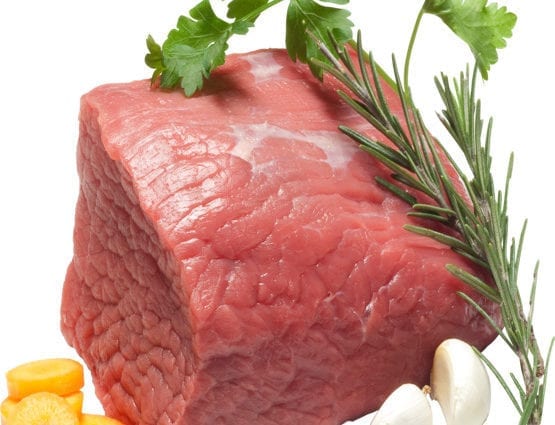Contents
Description
Tender veal is a generally recognized delicacy. In the European culinary tradition, for example, Italian and French, this meat has been highly valued for more than one century, Why is veal so different from the usual beef and why are the dishes made from it so delicious?
The first advantage is obvious. The exceptional tenderness of veal meat is due to its age. Compared to dairy veal, traditional beef appears a little dry, tough and very fibrous.
Of course, the choice of this delicacy should be approached with all responsibility. The best varieties of veal are distinguished by the finest fibers and a very pale pink color. There is very little fat in veal, it has a milky white color, and to the touch it is almost as velvety as the meat itself. Veal is very tough to the touch, and a sure way to test the quality of the meat is to lightly press down on it with your finger.
Fresh meat will quickly regain its shape, but the remaining dent may mean that you have beef but not veal in front of you, which was not stored or transported correctly.
Calorie content and composition
The chemical composition of veal is characterized by a high content of proteins, fats, vitamins (B3, B4, B5, B6, B9) and minerals (nickel, cobalt, fluorine, copper, iodine, zinc, iron, sulfur, chlorine, phosphorus, potassium, calcium, sodium, magnesium).
- 100 grams of veal contains about 152 kcal.
- Proteins 26.32 g
- Fat 6.94 g
- Water 64.59 g
Complete veal composition list you can find in specialized article ->>>
How to choose veal?

- unlike beef, fresh veal smells like fresh milk;
- veal has a rich light red meat color;
- the fat layers in veal are always white (they become yellowish with age and are typical for beef);
- the color of the veal must be solid (spots of any color on the meat indicate its improper storage, transportation or animal diseases, the taste of such a product will be significantly impaired);
- fresh veal has an elastic consistency (when pressed with a finger, there should be no pits, and the meat quickly takes on its original shape);
- the structure of the meat should be homogeneous (loose veal can only be with frequent use of drugs or chemical additives);
- the lighter the veal, the younger the animal was.
Which veal is not worth buying
- if there are extraneous odors in the aroma of veal, then you should not purchase such meat;
- the pungent and unpleasant smell of meat should also be the reason for refusing to buy it;
- if the meat does not smell, then when raising livestock, chemical compounds were used to increase the weight of the animal or accelerate its growth (calves are small, so such experiments are not uncommon);
- the absence of odor may be evidence that veal was soaked in vinegar (this procedure is used to eliminate a rotten smell);
- veal with a swollen structure was previously filled with liquid (to increase the mass or return it after vaporing);
- you should not buy damp, as if washed veal (some manipulations were carried out with the meat);
- if the veal has clearly visible depressions, then it was stored or transported incorrectly;
- in case the veal sticks to your fingers, then you should not buy it (this is a sign of spoilage of the meat);
- if the veal fat has acquired a yellow tint, and the meat has lost its pink color and became darker, then the animal has already begun to eat bait and grass, so the meat will be tougher.
Veal is rich in potassium, sodium, phosphorus, sulfur. It also contains such important elements as magnesium, calcium, chlorine.
The benefits of veal
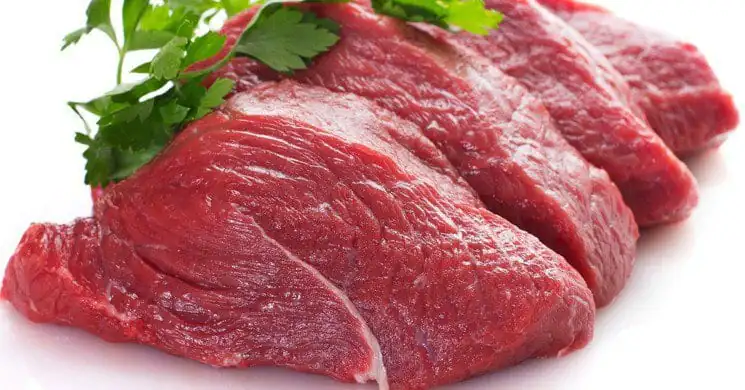
Benefits of veal in terms of vitamin content (in descending order of quantity in mg):
- choline (B4) – has a positive effect on the functioning of the entire nervous system, improves memory, mental abilities;
- nicotinic acid (PP) – provides tissue respiration, regulates metabolic processes;
- tocopherol (E) – strengthens cell membranes, protecting cells from chemical damage, prevents the accumulation of toxic substances in the body;
- pantothenic acid (B5) – participates in the synthesis of components important for the body (fatty acids, hemoglobin, good cholesterol);
- pyridoxine (B6) – helps the absorption of glucose, participates in the production of red blood cells, supports liver function.
Benefits of veal tenderloin
The beneficial properties of veal are due to the low content of solid animal fats. In comparison with beef, meat is tender, does not contain coarse connective tissue fibers. It is easily digested and suitable for people with chronic inflammatory gastrointestinal diseases.
The product is indicated for depletion, it compensates for the deficiency of proteins (building material of muscle tissue) and other useful substances. It has a beneficial effect on the nervous and cardiovascular system. In people with obesity, hypertension, atherosclerosis, eating meat does not provoke complications (unlike pork, which increases blood pressure, accumulates harmful cholesterol in the vessels).
What else is veal useful for:
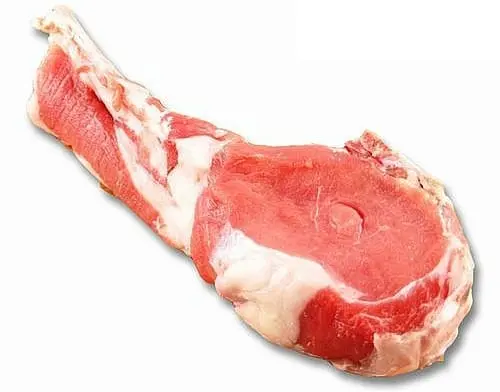
- is the prevention of iron deficiency anemia;
- replenishes the deficit of nonessential and essential amino acids;
- increases the ability to work;
- helps to recover after sports training;
- improves the condition of the skin, accelerates the healing process, scarring of the epithelium after mechanical damage to the skin.
When is veal harmful
The meat of a dairy calf has almost no contraindications to use. It is not recommended to include the product in the diet for people with joint diseases – polyarthritis, gout. Purine content contributes to the accumulation of uric acid.
The benefits and harms of veal for the body are determined by the method of preparation, and also depends on the state of human health. Fried meat should not be used for infectious inflammation of the gastrointestinal tract. With gastroenteritis, it is not recommended to drink broth. During cooking, nitrogenous substances are released, which can worsen the patient’s condition.
Veal has a drawback compared to other meats – increased allergenicity. The reaction of hypersensitivity to cow protein often develops in toddlers and preschool children.
The product of any heat treatment is prohibited for patients with severe bowel cancer.
Taste qualities of veal
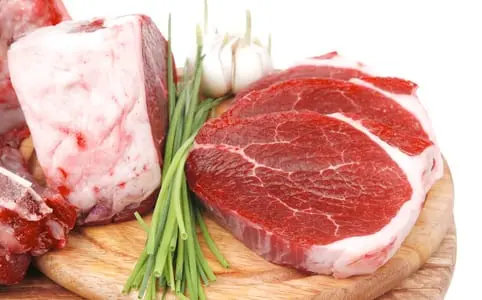
In general, veal has a pronounced meat flavor and a pleasant meat and milk aroma. Older individuals have a more intense smell, color and taste. But the taste of a product can change anything:
- Breed of animal
- Age
- Gender
- Diet and feed
- Conditions of detention
- Slaughter method
- Incorrect storage
- Foreign smells in the refrigerator, etc.
Therefore, the choice of quality meat is a responsible procedure. In appearance, it should be elastic, shiny and have a natural red color. The fat is soft, practically without films. If the product does not emit a milky smell, it means that the meat is of poor quality or it is not veal at all.
By the way, it is not worth freezing veal; during the freezing process, the taste and aroma become less intense, and then completely lost.
Cooking applications

Beef and veal are widely used in gastronomy and cooking. The meat lends itself well to heat treatment, it can be stewed, fried, boiled, baked, marinated, cooked over an open fire, grilled, dried, smoked, etc. From ground beef, delicious cutlets, meatballs, dumplings, sausages and other dishes are obtained.
First courses, clear broths and soups are perfectly cooked with it. You can use the scapula and shoulder part, rump, sirloin on the bone, rump with sugar bone.
Fillet and entrecote make excellent medallions, chops and even barbecue. Meat is often an ingredient in delicious salads.
Beef is used in many countries of the world, famous chefs prepare gourmet dishes from it, meat has deservedly become the basis of many traditional dishes. Who does not know the world famous beef stroganoff, English roast beef, American filet mignon, Mexican chili con carne, Tatar azu or Siberian dumplings? The main thing is to choose the right piece, and the success of the dish is guaranteed.
Beef can be served with cereals, pasta and vegetables. It goes well with seasonings: marjoram, thyme, bay leaf, black and red pepper. You can serve horseradish or mustard sauce with the dish, sprinkle with chopped herbs and add a glass of red wine.
In the vide below you may learn how to cook Veal escalope with Gordon Ramsay:
Delicate veal in sour cream sauce
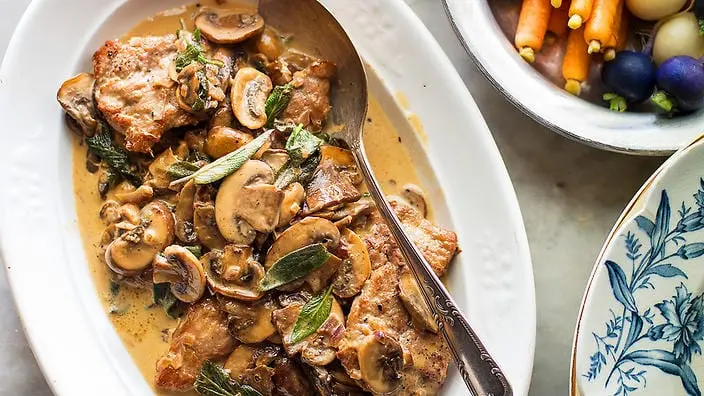

The main ingredients
- veal 600 g
- onion 1 pc.
- carrots 1 pc.
- soy sauce 1 tbsp l.
- salt to taste
- pepper 1 g
- flour 1 tbsp. l.
- sour cream 2 tbsp. l.
- parsley greens 1 bunch
- butter 20 g
Preparation
- Cut the veal into small pieces, simmer slightly, (I simmer in a cast iron pan) add finely chopped onion. When the onion has softened a little and gave an aroma, add salt, a little freshly ground pepper (you can do more, but I do it for children, so everything in moderation :)) and a spoonful of soy sauce, mix.
- When the meat absorbs the aromas, I add carrots (here at least cubes, stripes are your imagination, I have triangles). I add a little water and cover with a lid, leaving a small outlet for steam :), I give it a good stew.
- Lightly fry the flour in a frying pan, mix well with sour cream, add water and stir to avoid lumps, add a little salt. Send back to the pan, stirring constantly, do not boil.
- When the sauce begins to thicken, put a piece of butter in it, stir until dissolved and in a saucepan, also stirring. Allow another 5 minutes to stew, parsley and you’re done!










